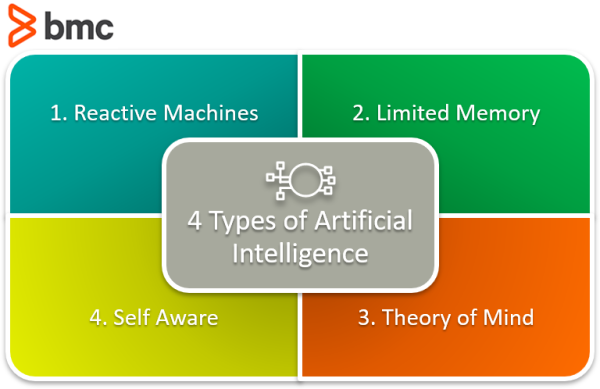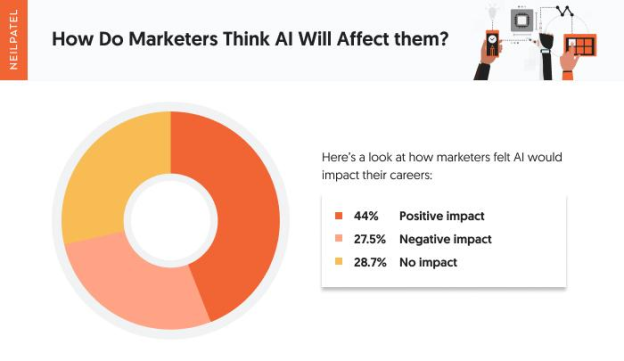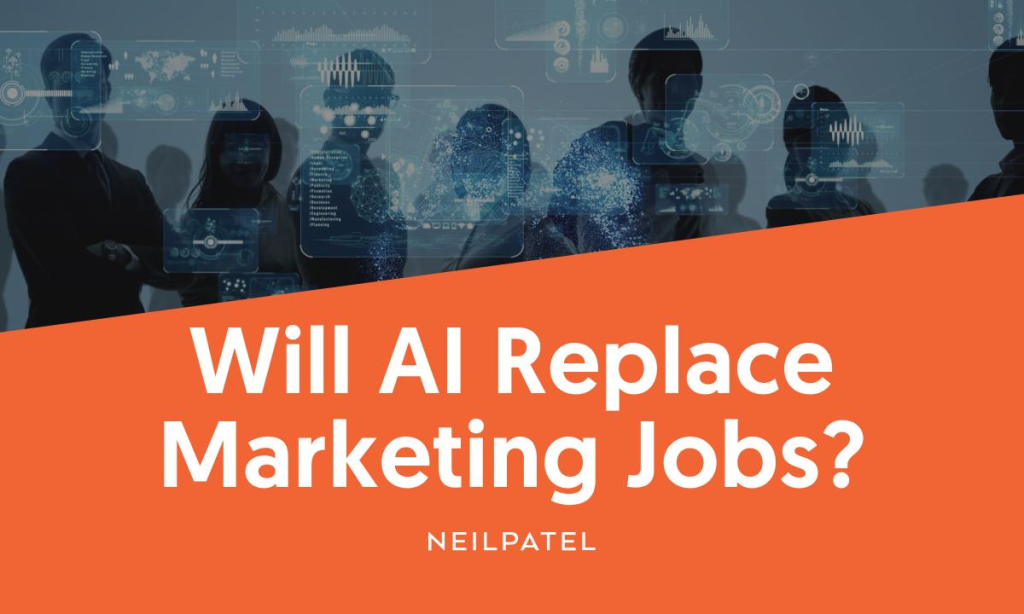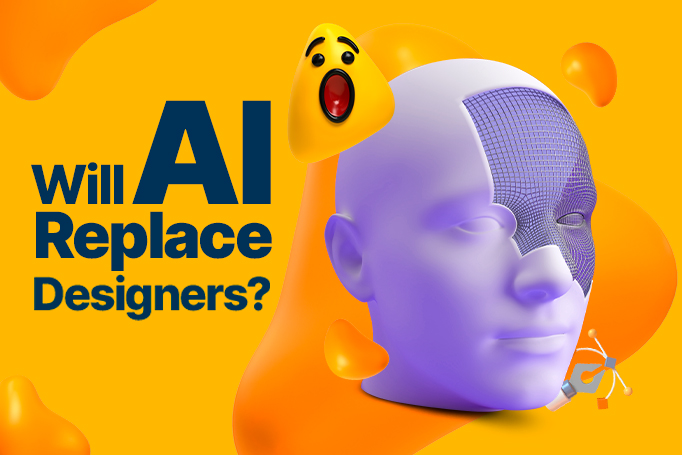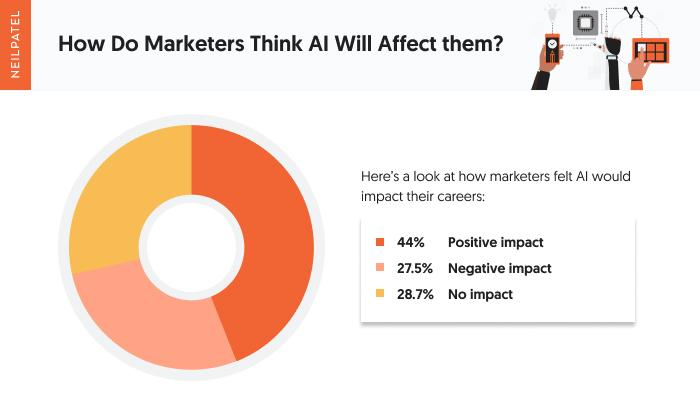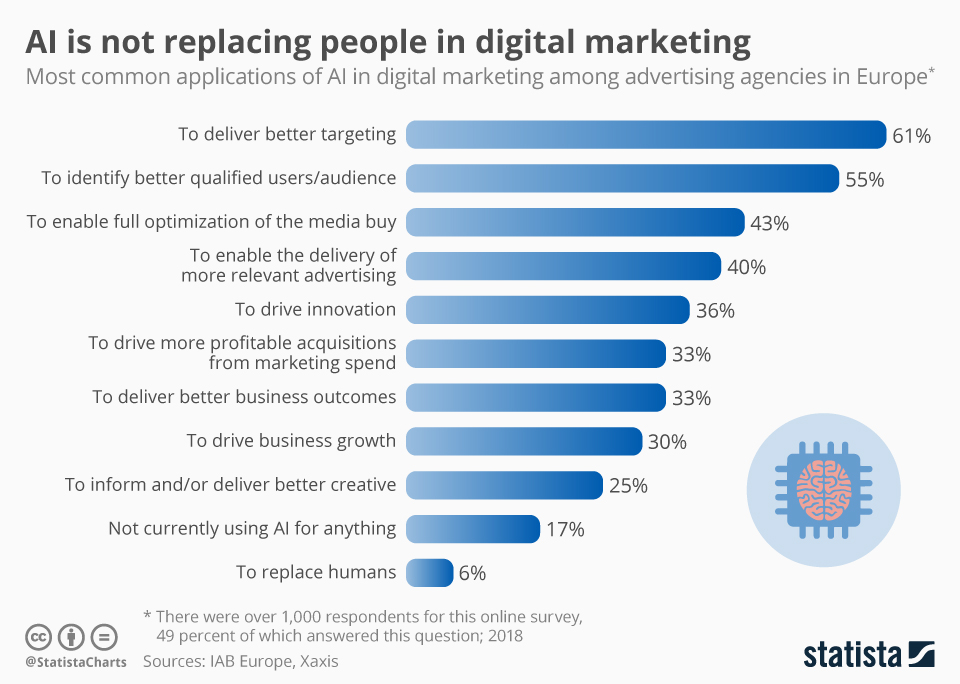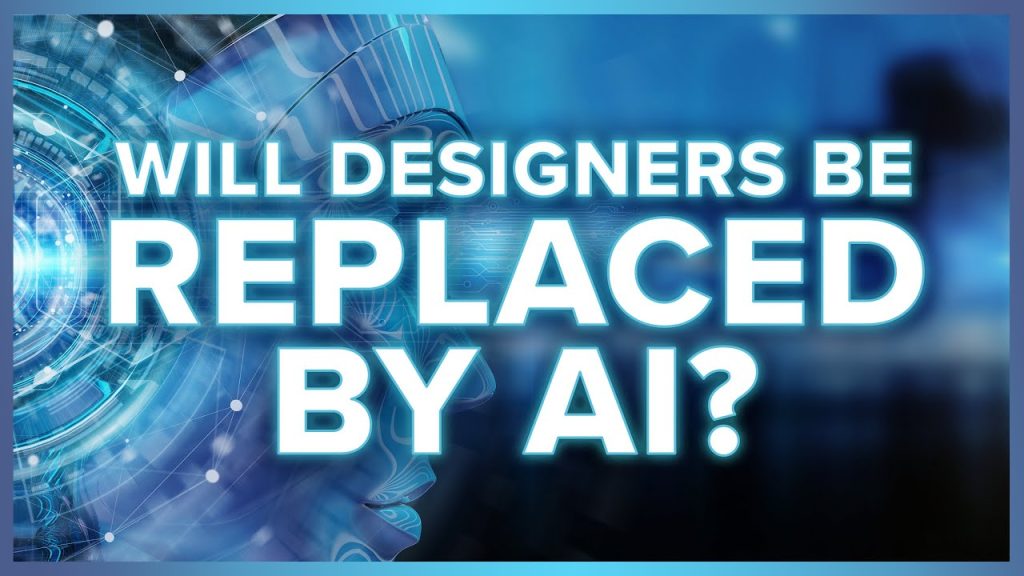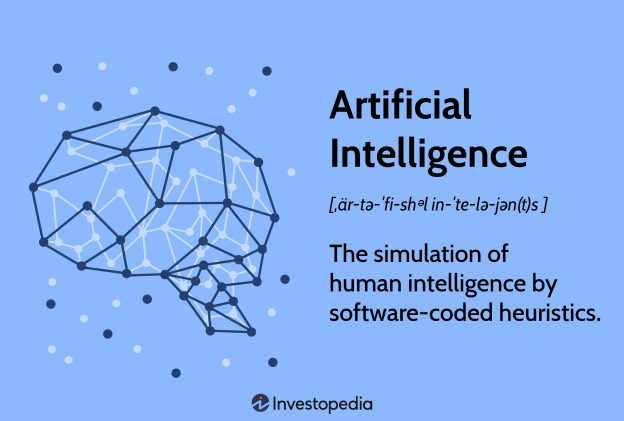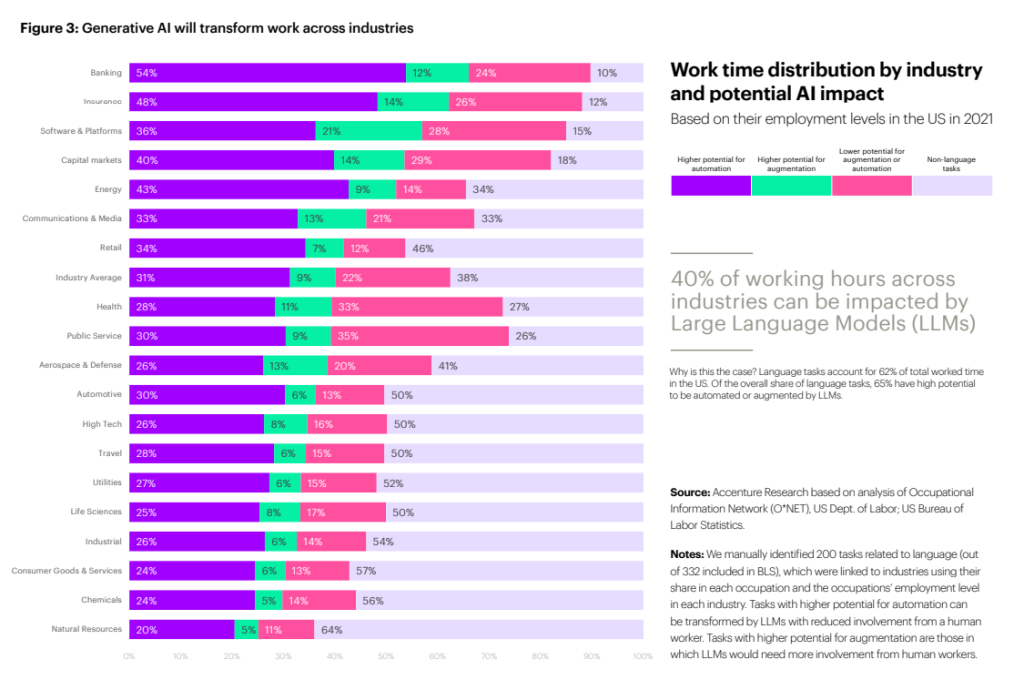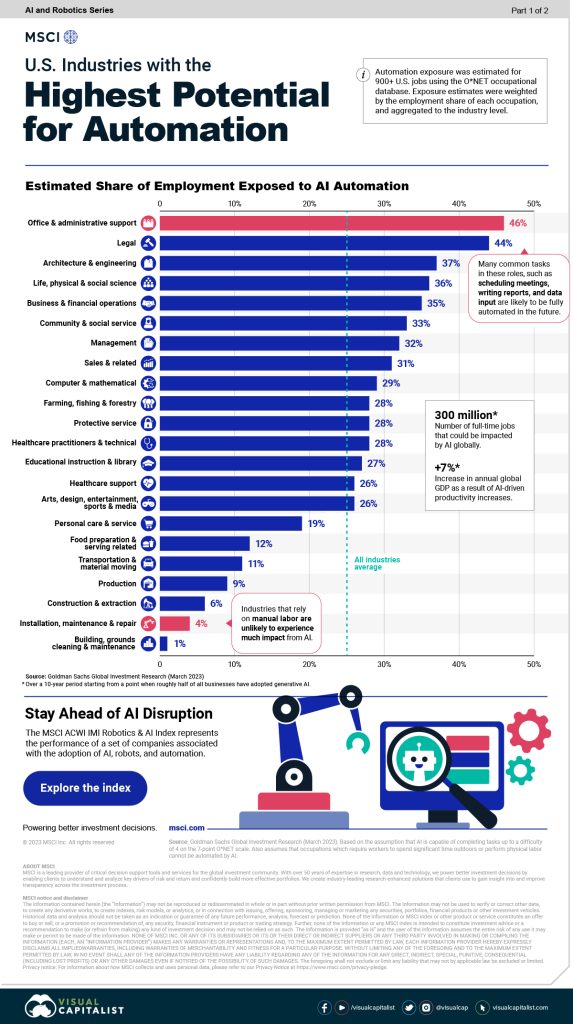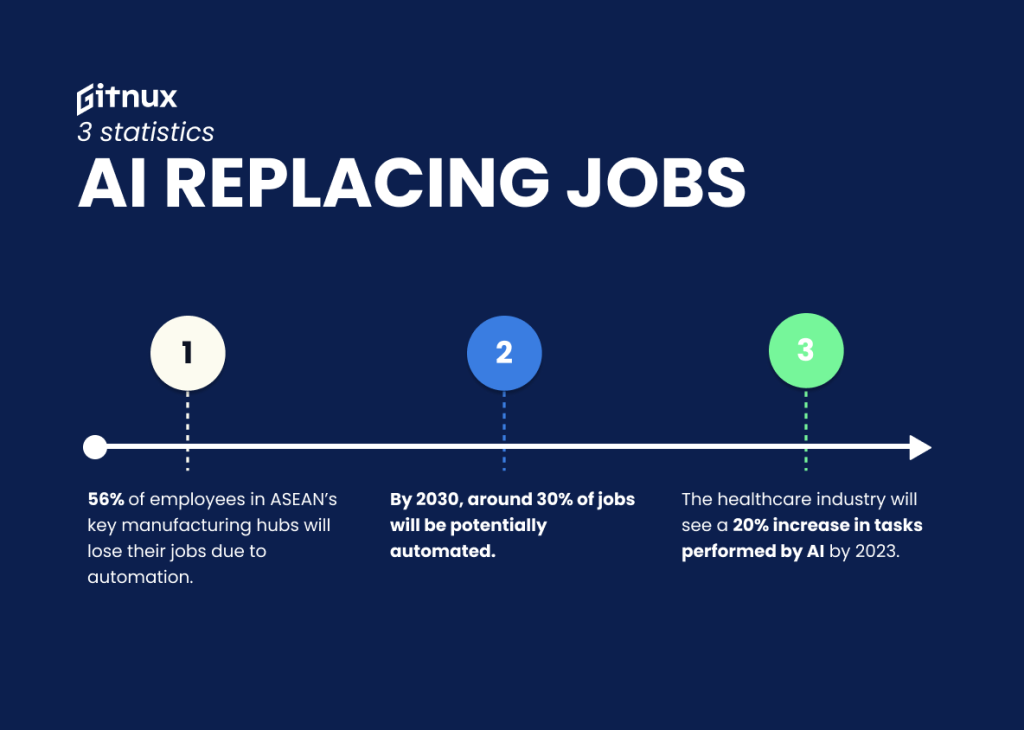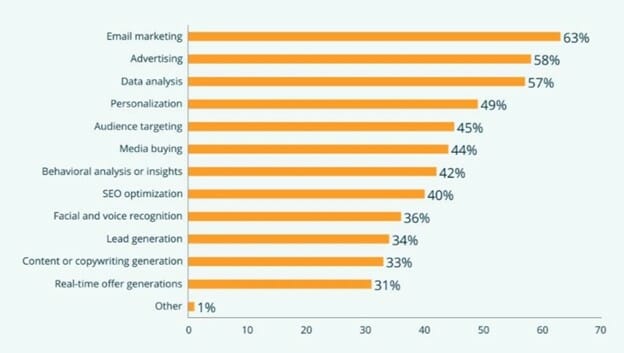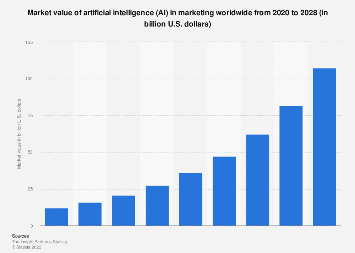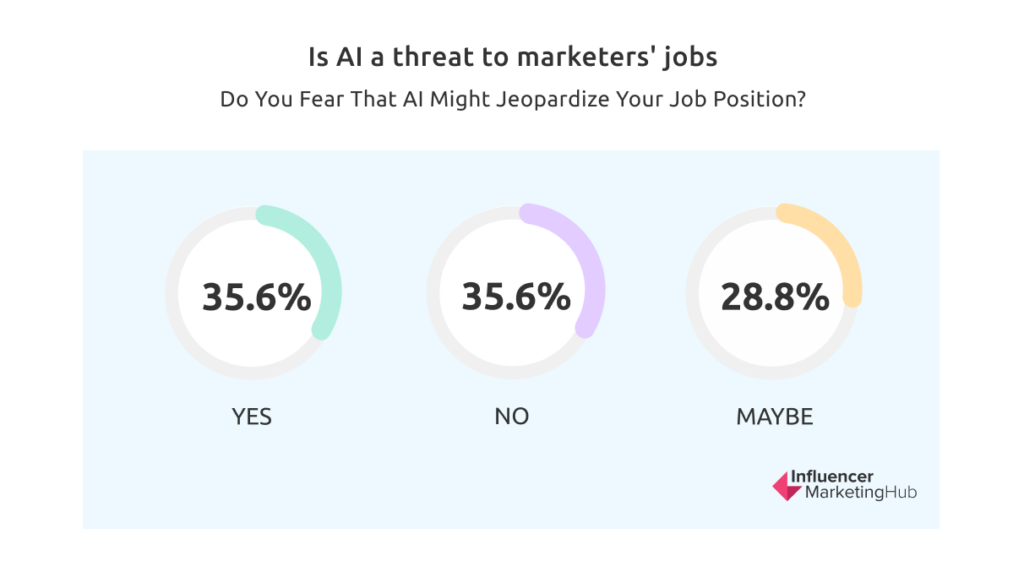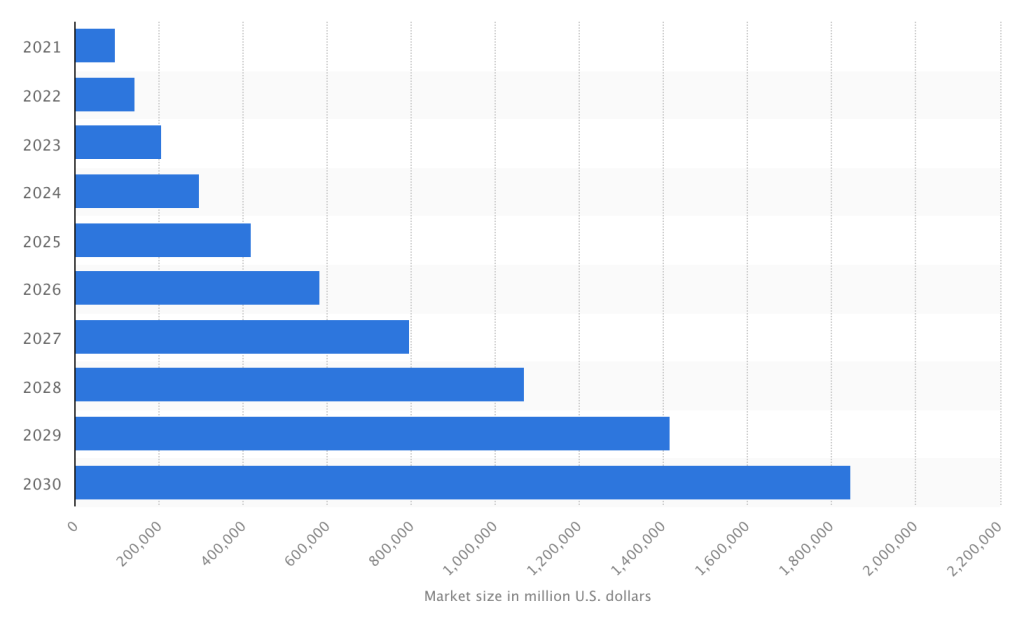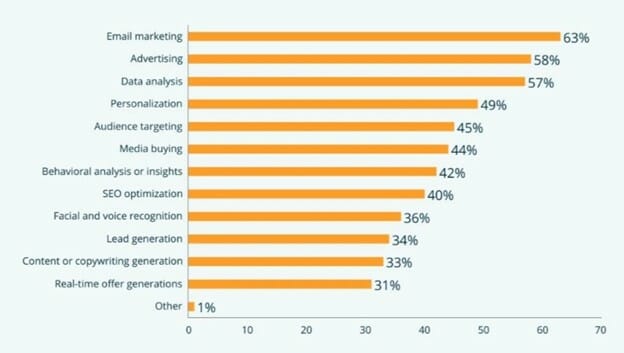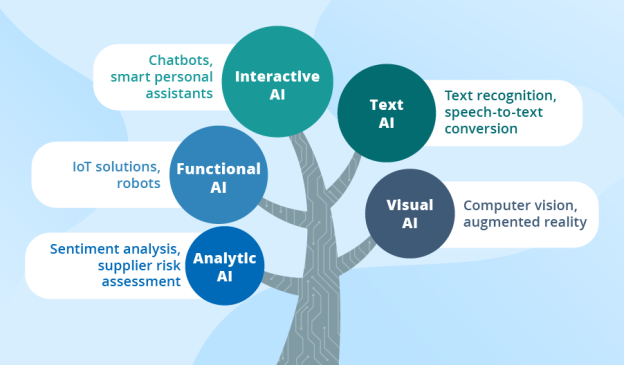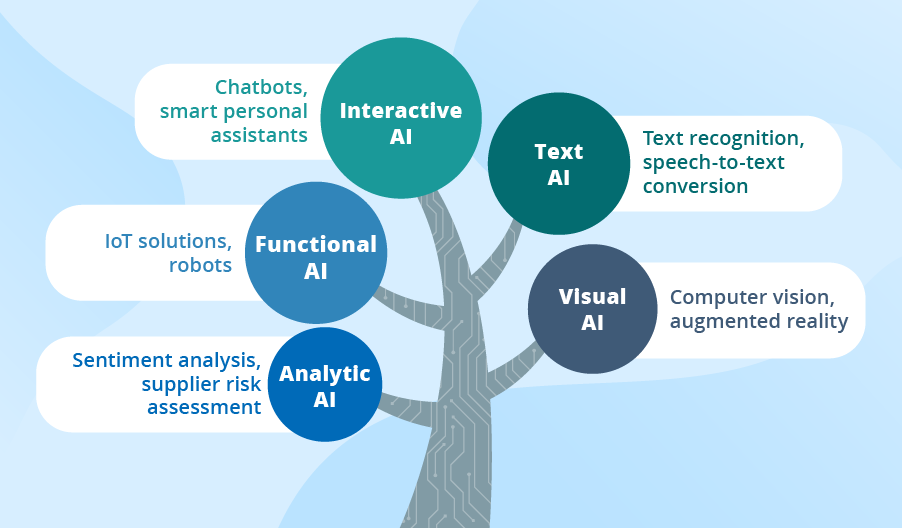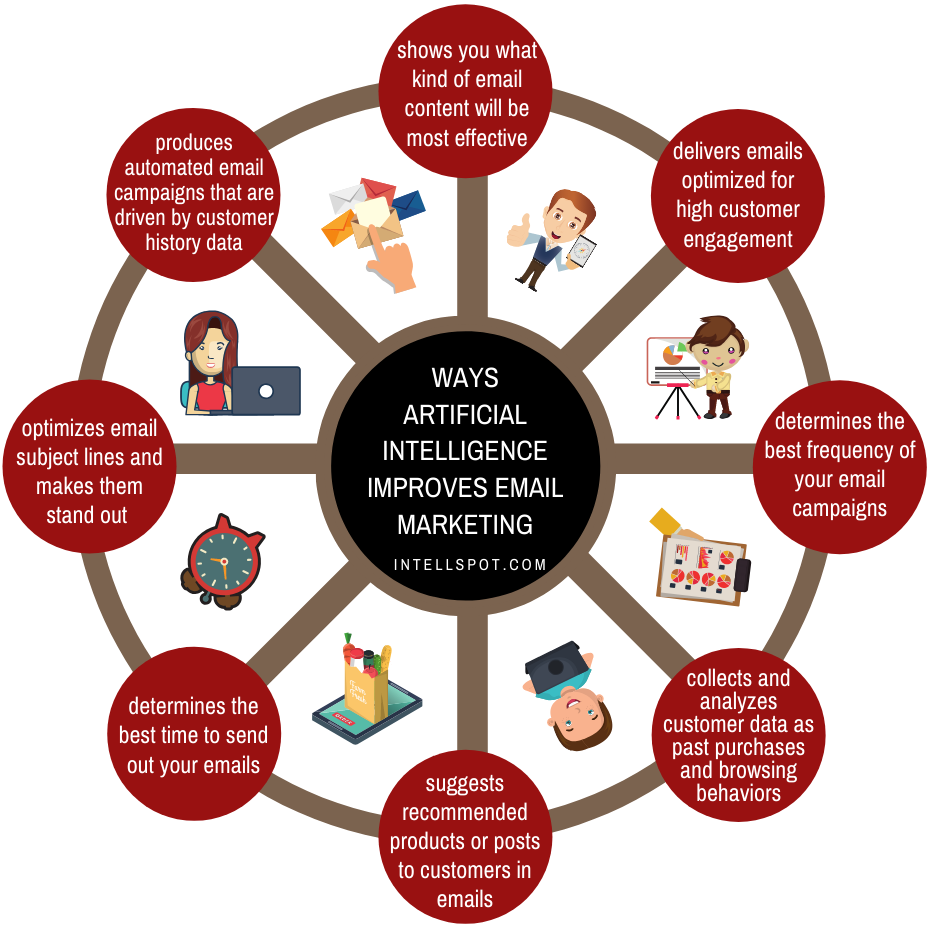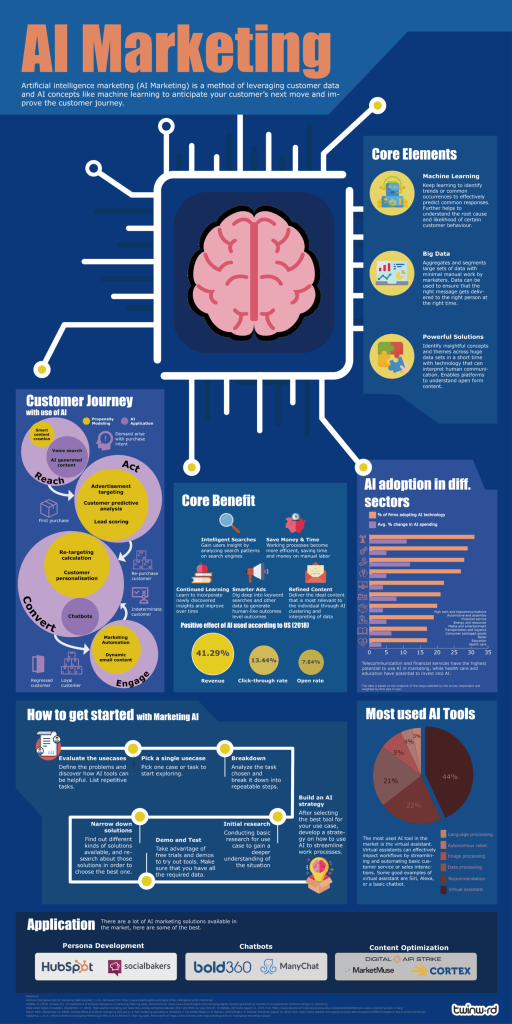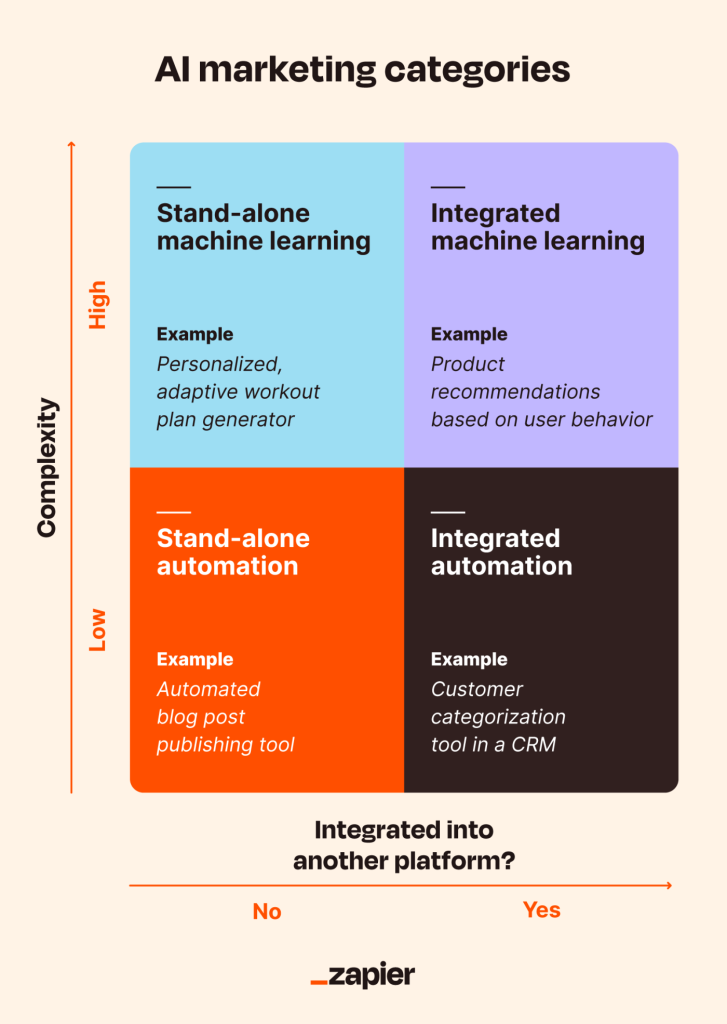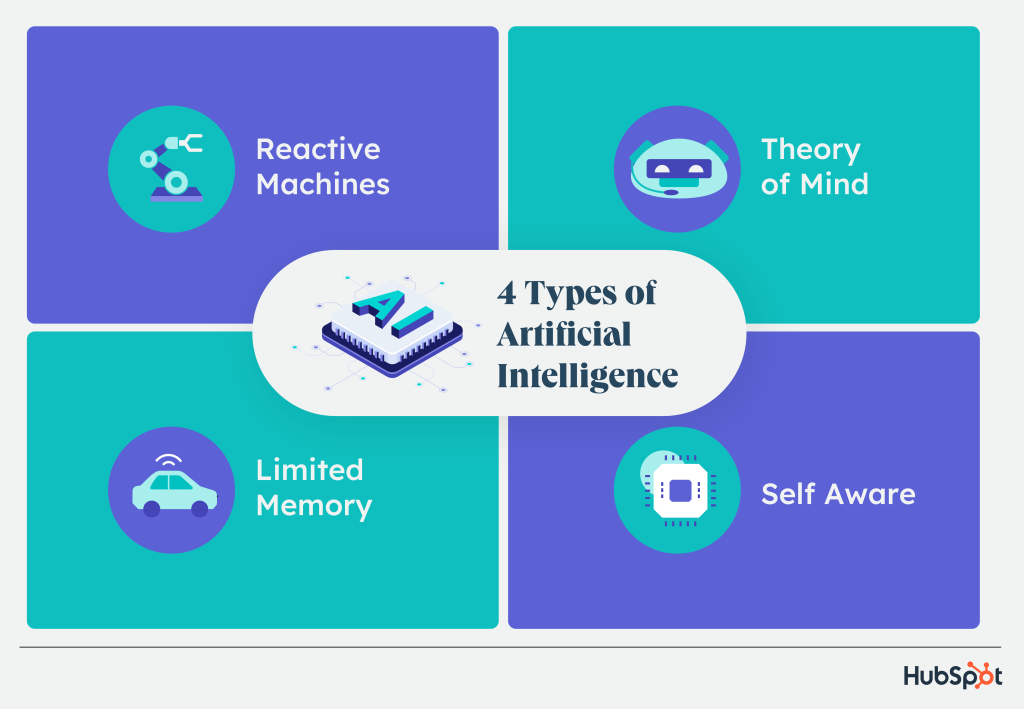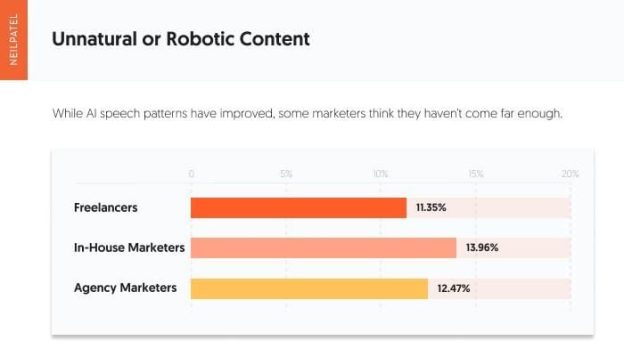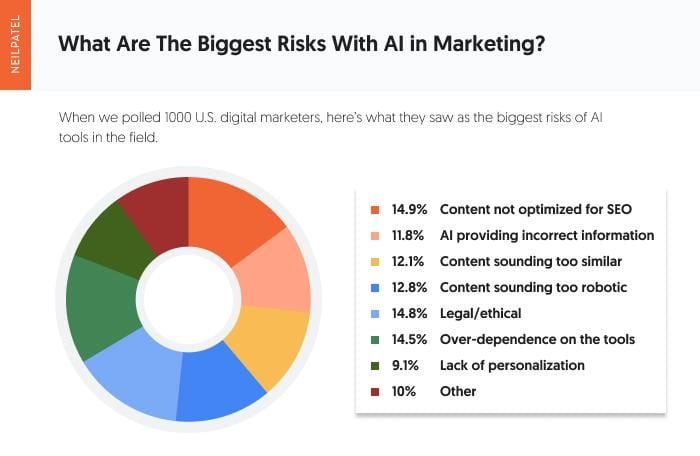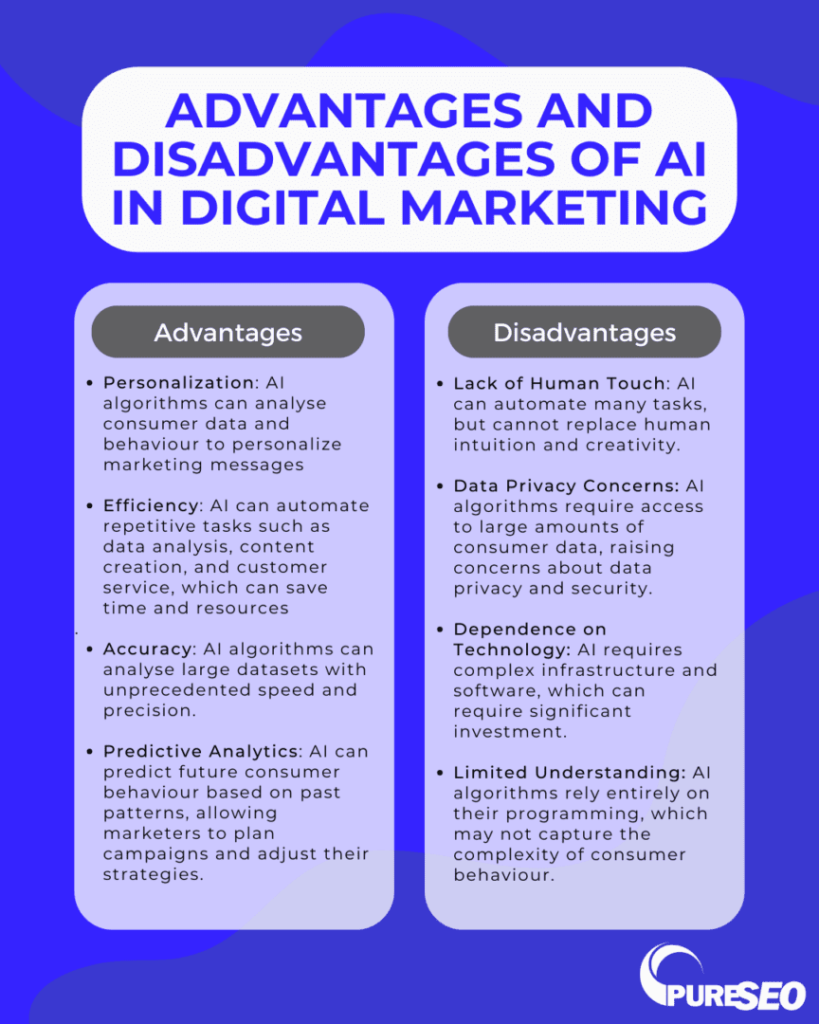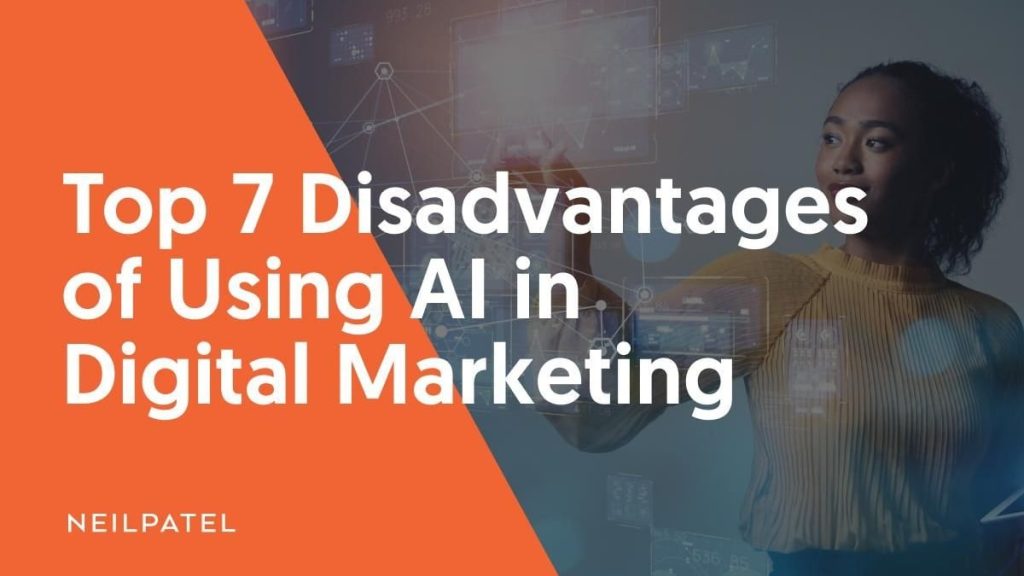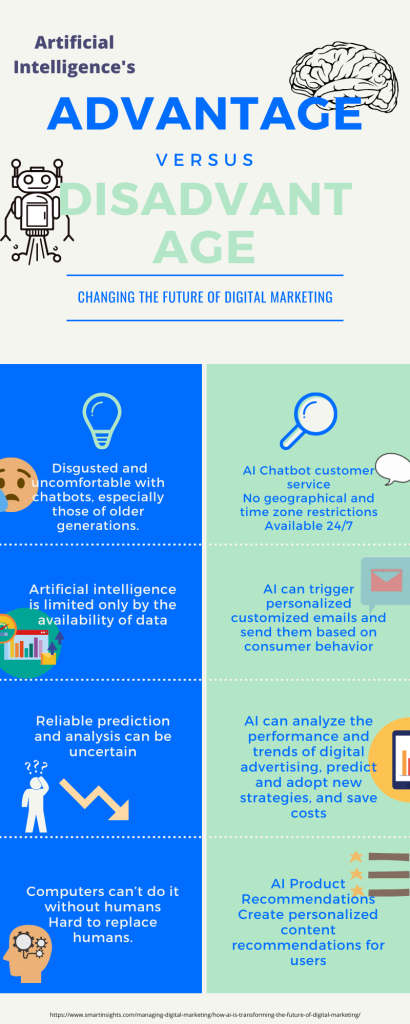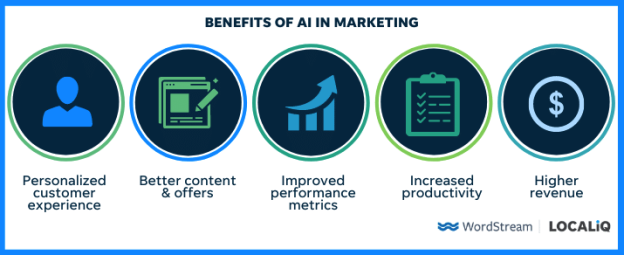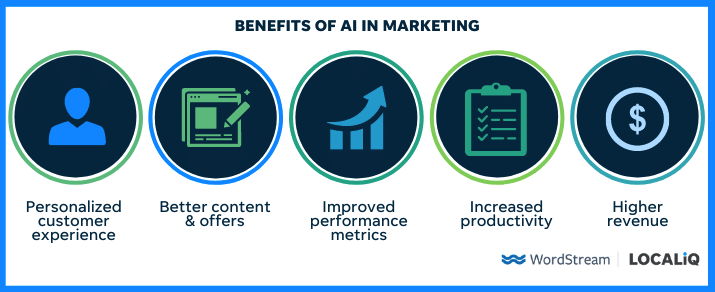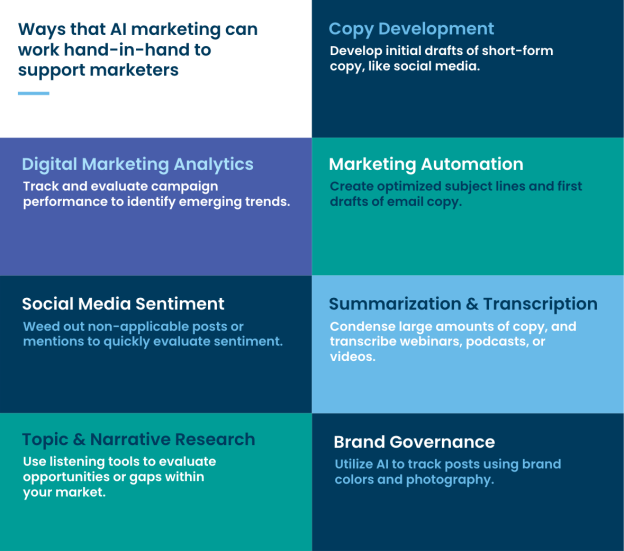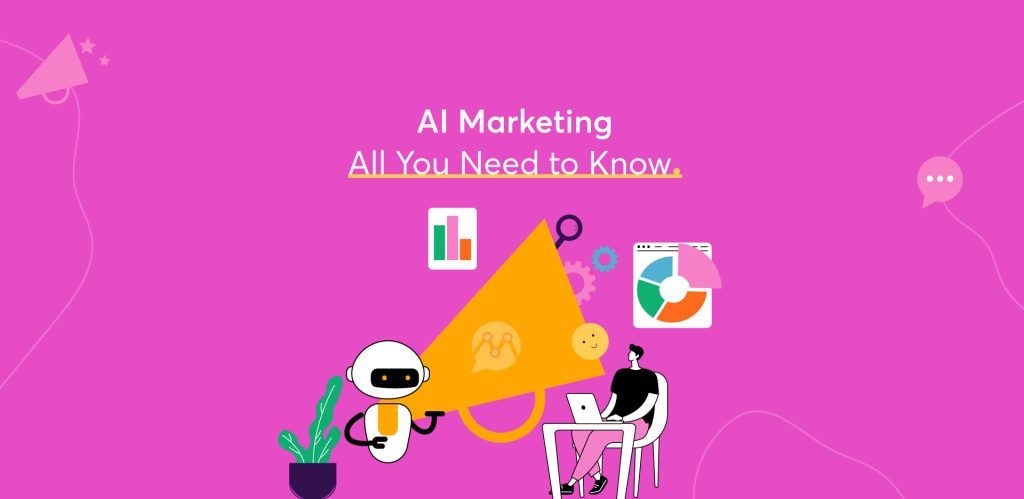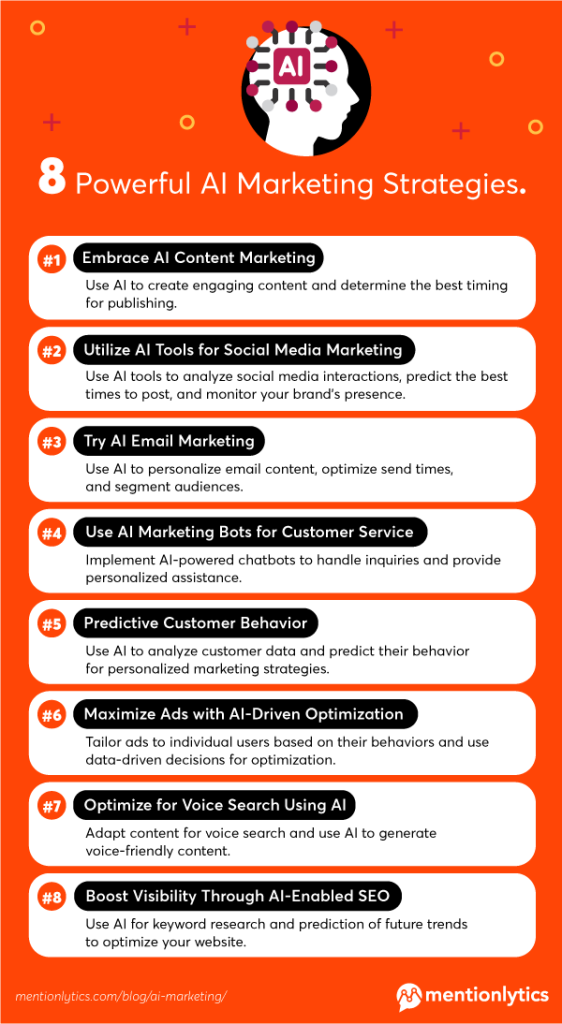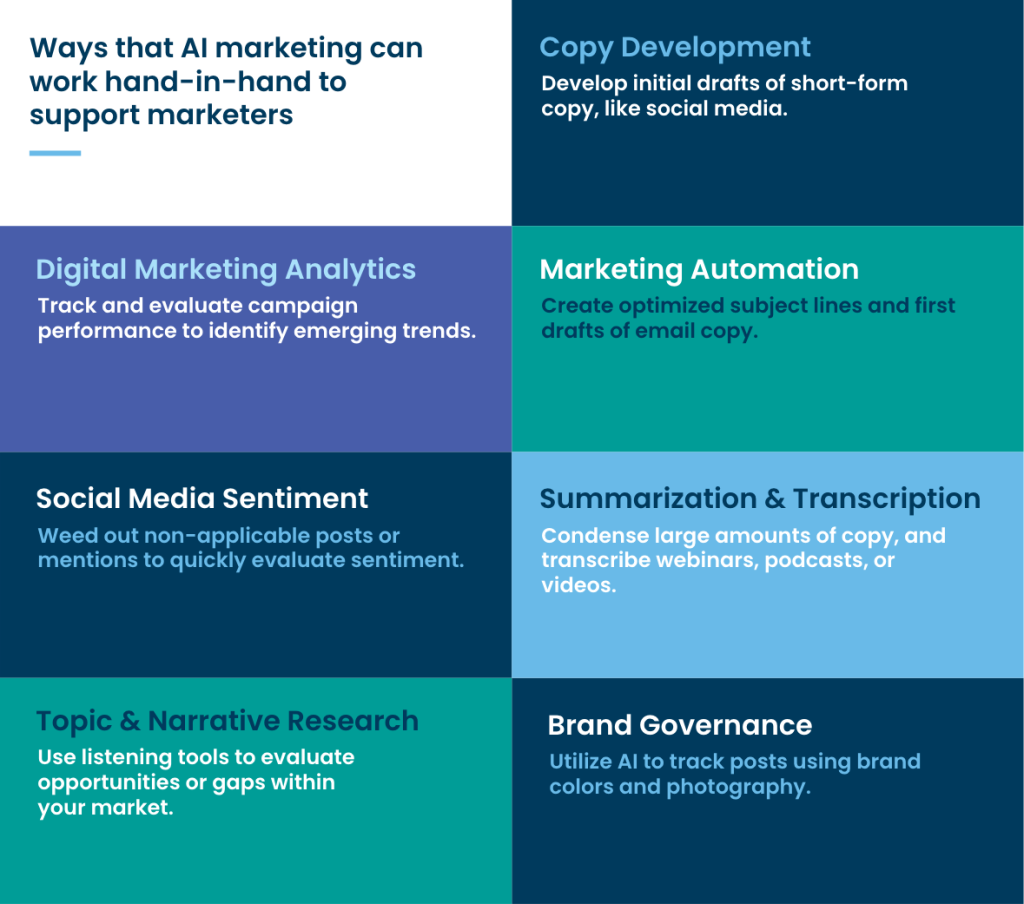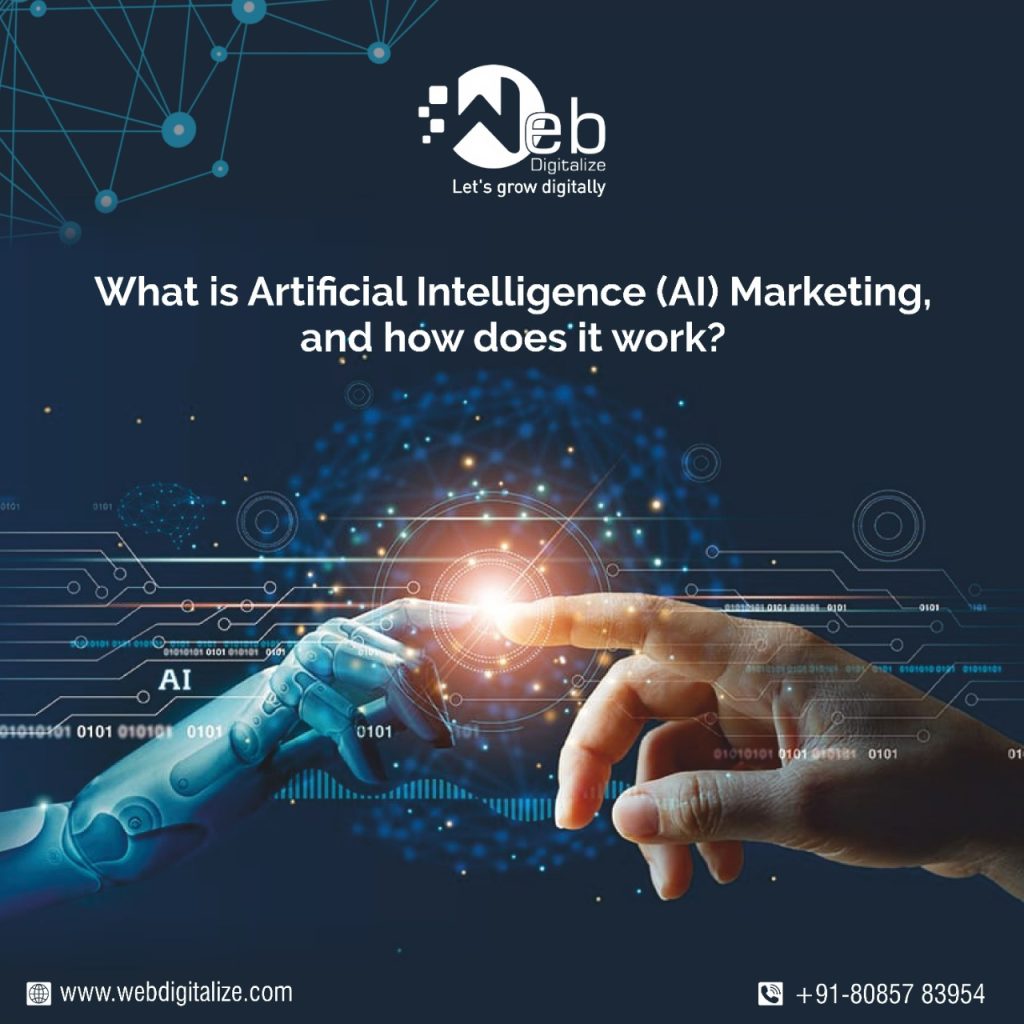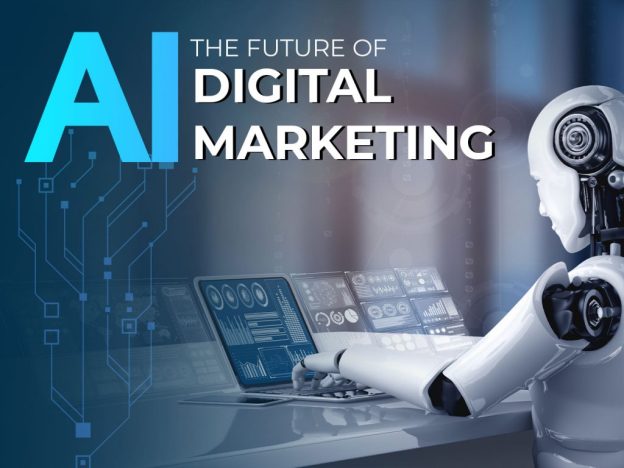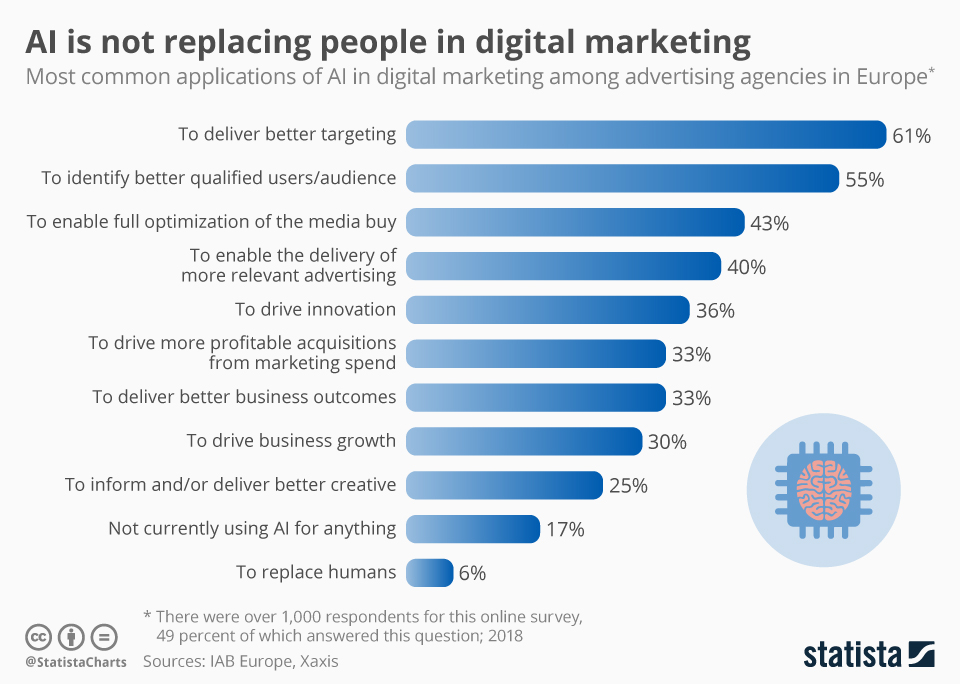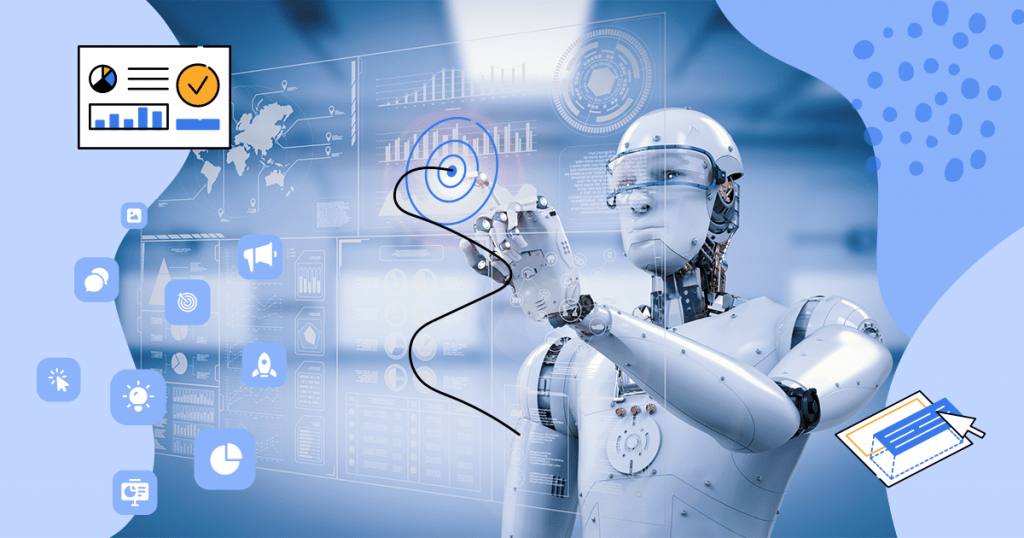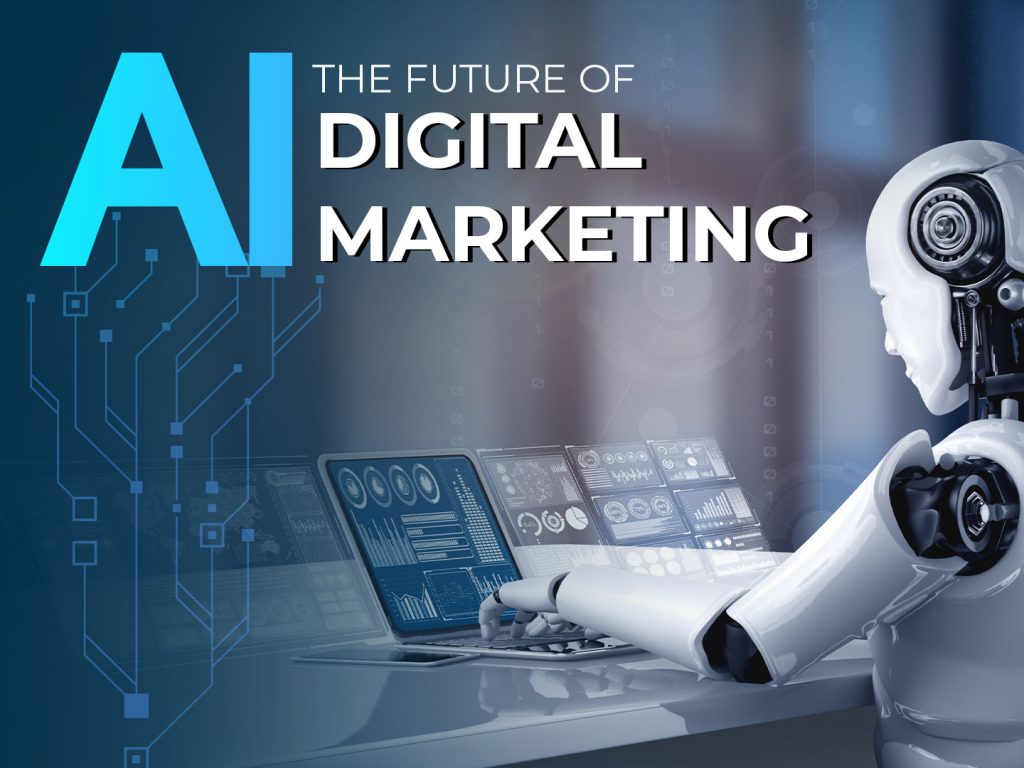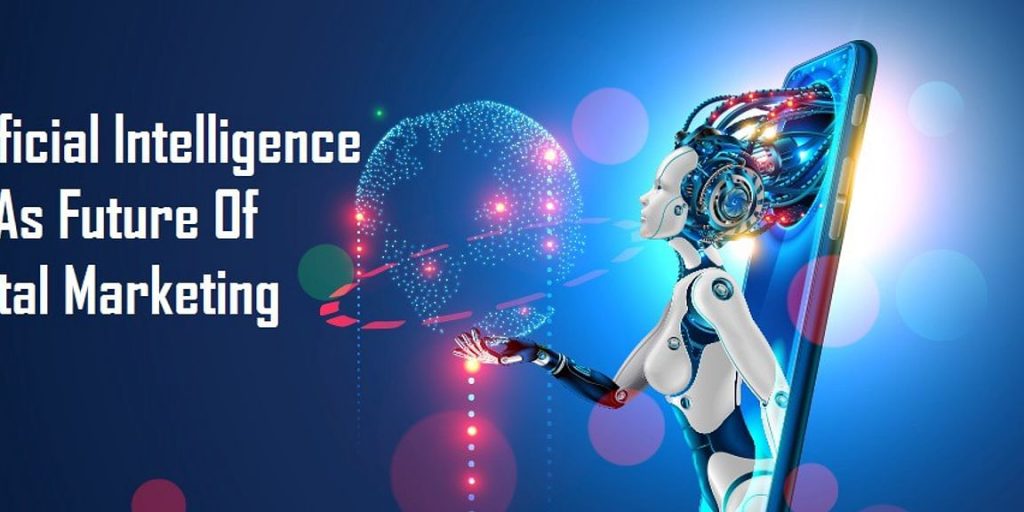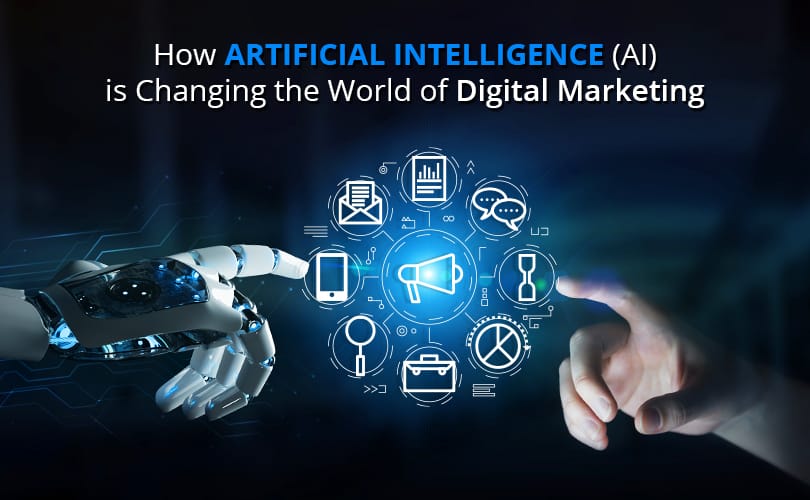Artificial intelligence is revolutionizing the way we live, work, and interact. In this article, we will explore four powerful examples of AI that are shaping our world. From self-driving cars that navigate the roads with precision, to chatbots that offer personalized customer support, these cutting-edge technologies demonstrate the incredible potential of AI. Additionally, we will delve into the realm of facial recognition systems that enable secure identification, as well as AI-powered healthcare tools that assist in diagnosing and treating diseases. Get ready to witness the astonishing capabilities of artificial intelligence and how it is transforming various industries.
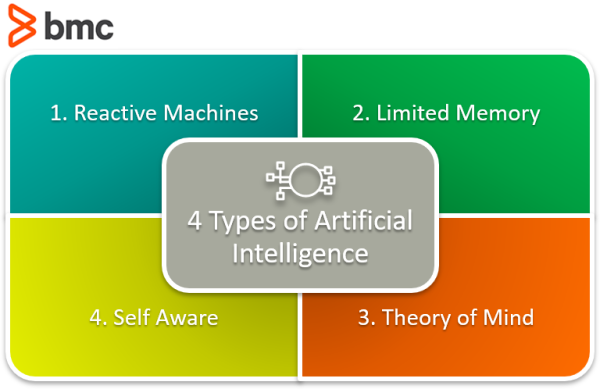
This image is property of s7280.pcdn.co.
Speech Recognition
Introduction to Speech Recognition
Speech recognition is a technology that enables computers to interpret and understand human speech. Through the use of advanced algorithms and machine learning techniques, speech recognition systems can convert spoken language into written text or perform various tasks based on voice commands. This technology has made significant advancements in recent years and is now widely used in various applications and industries.
Examples of Speech Recognition Applications
Speech recognition has found its way into numerous applications, making our lives easier and more efficient. One prominent example is virtual assistants such as Apple’s Siri, Amazon’s Alexa, and Google Assistant. These intelligent systems can understand and execute voice commands, allowing users to perform tasks through voice interactions.
Another application of speech recognition is in transcription services. Rather than manually typing out information, journalists, doctors, and researchers can use speech recognition software to convert spoken words into written text. This greatly speeds up the process and increases productivity.
Speech recognition technology is also utilized in call centers to improve customer service. Automated voice systems can understand and respond to customer queries, providing immediate assistance without the need for human intervention. This not only saves time but also improves the overall customer experience.
Advantages of Speech Recognition
Speech recognition technology offers several advantages. Firstly, it provides a more natural and intuitive way of interacting with computers and devices. Instead of relying on keyboards or touchscreens, users can simply speak their commands or input information, making it easier for individuals with limited mobility or those who prefer a hands-free approach.
Furthermore, speech recognition systems can enhance accessibility by helping individuals with disabilities, such as visually impaired individuals or those with motor impairments. By providing an alternative input method, speech recognition enables these individuals to navigate technology and access information more independently.
Another advantage is the potential for increased productivity. With speech recognition, tasks that would typically require manual input, such as writing emails or creating documents, can be accomplished much faster. This allows individuals to focus on more critical tasks, saving time and improving efficiency.
Challenges in Speech Recognition
While speech recognition has come a long way, there are still challenges to overcome. One of the main challenges is accurately recognizing and understanding speech in different languages, accents, and dialects. Speech recognition systems must account for variations in pronunciation, vocabulary, and grammar, which can be particularly challenging in multilingual environments.
Another challenge is dealing with background noise and environmental factors. Speech recognition systems must filter out unwanted noise and focus on the user’s speech to ensure accurate results. This becomes even more challenging in noisy environments or when multiple speakers are present.
Additionally, privacy and security concerns related to speech recognition technology have emerged. As speech is a form of personal data, there are concerns about how the collected information is used, stored, and protected. Ensuring proper data privacy measures and addressing ethical considerations is crucial for the widespread adoption of speech recognition technology.
Natural Language Processing
Introduction to Natural Language Processing (NLP)
Natural Language Processing (NLP) is a branch of artificial intelligence that focuses on the interaction between computers and human language. It involves the analysis and understanding of human language with the aim of enabling computers to process, interpret, and respond to natural language input. NLP has revolutionized the way we interact with computers and has a wide range of applications across various industries.
Examples of NLP Applications
NLP has numerous applications, ranging from simple language tasks to complex language understanding. One common example is language translation. NLP algorithms can analyze and interpret the meaning of text in one language and translate it into another language. This has greatly facilitated communication and made it easier for individuals to understand content in different languages.
Another application is sentiment analysis, where NLP is used to analyze and understand the sentiment expressed in text data. This is particularly useful in social media monitoring, market research, and customer feedback analysis. By automatically detecting sentiment from text, companies can gain insights into their customers’ opinions and adjust their strategies accordingly.
NLP is also used in chatbots and virtual assistants to enable more human-like conversations. Through natural language processing, these systems can understand user queries and provide relevant responses, allowing for efficient customer support and information retrieval.
Benefits of NLP
NLP offers several benefits in various domains. By automating language-related tasks, NLP enhances efficiency and reduces the need for manual intervention. This not only saves time but also enables businesses to handle large amounts of text data more effectively.
Another advantage of NLP is improved accuracy and precision in information retrieval. Through algorithms that analyze the meaning and context of text, NLP systems can provide more relevant and accurate search results, improving the overall user experience.
Furthermore, NLP aids in extracting valuable insights from unstructured text data. By analyzing large volumes of text, businesses can gain valuable insights into consumer behavior, market trends, and customer sentiments. This information can be leveraged to make informed decisions and develop effective strategies.
Limitations of NLP
While NLP has made significant advancements, there are still limitations to be addressed. One challenge is the ambiguity and complexity of natural language. Words and phrases can have multiple meanings and interpretations, making it difficult for NLP systems to accurately understand context and intent.
Another limitation is the need for large amounts of annotated and labeled data for training NLP models. Creating high-quality labeled datasets can be time-consuming and resource-intensive, limiting the scalability of NLP applications.
Additionally, NLP algorithms may struggle with understanding colloquial language, slang, or domain-specific terminology. Adapting NLP models to different contexts and specialized domains remains an ongoing challenge.
Computer Vision
Introduction to Computer Vision
Computer vision is a field of artificial intelligence that focuses on enabling computers to understand and interpret visual information from images or videos. By leveraging techniques such as image processing, pattern recognition, and machine learning, computer vision allows machines to analyze and extract meaningful information from visual data.
Examples of Computer Vision Applications
Computer vision has a wide range of applications across various industries. One example is object recognition, where computer vision algorithms can identify and classify objects within images or videos. This technology is used in facial recognition systems, security surveillance, autonomous vehicles, and even in social media platforms for automatic tagging of images.
Another application is image-based medical diagnosis. Computer vision can analyze medical images such as X-rays, CT scans, or MRIs to detect and identify diseases, tumors, or anomalies. This technology aids in early detection and diagnosis, improving the efficiency and accuracy of healthcare professionals.
Computer vision is also used in the field of robotics, enabling machines to perceive and interact with their environment. Robots equipped with computer vision can navigate and manipulate objects, making them more versatile and capable in various tasks. This has led to advancements in areas such as industrial automation, agriculture, and healthcare.
Advantages of Computer Vision
Computer vision offers several advantages, including improved efficiency and automation. By automating visual tasks, machines can analyze and process large amounts of visual data more quickly and accurately than humans. This allows for increased productivity and cost savings.
Another advantage is enhanced safety and security. Computer vision systems can monitor and analyze video feeds in real-time, enabling the detection of anomalies, intrusions, or potential threats. This technology has applications in surveillance, access control, and public safety.
Additionally, computer vision opens up new possibilities for data analysis and insights. By extracting information from visual data, businesses can gain valuable insights into customer behavior, product preferences, and market trends. This can drive informed decision-making and provide a competitive advantage.
Challenges in Computer Vision
Despite the advancements in computer vision, there are still challenges to overcome. One challenge is the need for large amounts of labeled training data. Developing accurate computer vision models requires extensive training on diverse datasets, which can be time-consuming and costly to create.
Another challenge is the interpretation of complex scenes. Computer vision algorithms may struggle to understand context, infer relationships between objects, or handle occlusions. This becomes particularly challenging in scenarios with cluttered backgrounds or ambiguous visual cues.
Additionally, ethical considerations arise in computer vision applications, especially when it comes to privacy and surveillance. Balancing the benefits of computer vision with individual privacy rights is an ongoing challenge that needs careful attention and regulation.
Machine Learning
Introduction to Machine Learning
Machine learning is a subset of artificial intelligence that focuses on enabling computers to learn from and make predictions or decisions based on data, without being explicitly programmed. By leveraging algorithms and statistical models, machine learning algorithms can recognize patterns, make predictions, and continuously improve their performance over time.
Examples of Machine Learning Applications
Machine learning has a wide range of applications across various industries. One example is spam filtering, where machine learning algorithms can analyze and classify emails as spam or not spam based on patterns and characteristics. This technology has greatly improved email management and reduced the amount of unwanted messages.
Another application of machine learning is recommender systems, such as those used by streaming platforms like Netflix or online retailers like Amazon. These systems analyze user preferences and behavior to provide personalized recommendations, enhancing the user experience and increasing customer satisfaction.
Machine learning is also used in fraud detection, where algorithms analyze patterns and anomalies in financial transactions to identify potential fraudulent activities. By continuously learning from new data, machine learning models can adapt and improve their ability to detect and prevent fraud in real-time.
Benefits of Machine Learning
Machine learning offers several benefits, including improved accuracy and efficiency. Machine learning models can analyze large volumes of data and recognize complex patterns, enabling more accurate predictions and decision-making. This can lead to increased productivity and cost savings in various industries.
Another advantage is the ability to automate and streamline processes. By leveraging machine learning algorithms, tasks that were previously manual and time-consuming, such as data entry or quality control, can be automated, freeing up valuable resources.
Furthermore, machine learning enables personalized experiences and recommendations. By analyzing user behavior and preferences, companies can tailor their products or services to individual users, improving customer satisfaction and engagement.
Limitations of Machine Learning
Despite its advantages, machine learning has limitations that need to be considered. One challenge is the need for large and representative datasets for training models. Machine learning algorithms rely on historical data to make predictions or decisions, and biases or inaccuracies in the training data can affect the model’s performance.
Another limitation is the lack of interpretability and transparency. Some machine learning models, such as deep neural networks, can be highly complex and difficult to understand. This poses challenges in industries with strict regulatory requirements, where being able to explain the decisions made by machine learning models is crucial.
Additionally, machine learning models may struggle with handling data that lies outside their training distribution, leading to poor generalization and limited adaptability to unseen scenarios. Continual monitoring and updating of machine learning models are necessary to ensure their performance remains accurate and reliable.

This image is property of techvidvan.com.
Virtual Assistants
Introduction to Virtual Assistants
Virtual assistants are AI-powered software or applications designed to assist users by performing tasks or providing information through voice or text-based interactions. These intelligent systems use natural language processing and speech recognition technologies to understand user queries and offer relevant responses or perform requested actions.
Examples of Virtual Assistants
Virtual assistants have become increasingly popular and are now integrated into various devices and platforms. Examples include Apple’s Siri, Amazon’s Alexa, Google Assistant, and Microsoft’s Cortana. These virtual assistants can perform tasks such as setting reminders, playing music, checking the weather, and even controlling smart home devices, all through voice commands.
Another example is chatbots used in customer service. Companies employ virtual assistants to communicate with customers and provide immediate assistance or answer queries. Virtual assistants can handle a wide range of tasks, reducing the need for human intervention and increasing customer satisfaction.
Advantages of Virtual Assistants
Virtual assistants offer several advantages. Firstly, they provide convenience and accessibility. With virtual assistants, users can perform tasks or obtain information simply by speaking or typing, eliminating the need for manual input or navigation through multiple interfaces or applications.
Furthermore, virtual assistants can enhance productivity by automating repetitive tasks and providing instant responses. This enables individuals to focus on more critical or complex tasks, saving time and increasing efficiency.
Virtual assistants also offer personalized experiences. By learning from user interactions and preferences, virtual assistants can tailor their responses or recommendations to individual users’ needs and preferences. This improves user satisfaction and engagement.
Challenges in Virtual Assistant Development
Developing virtual assistants poses several challenges. One challenge is accurately understanding and interpreting user queries. Virtual assistants must have a broad and comprehensive knowledge base to provide accurate and relevant information or perform requested actions. Achieving this level of understanding and response accuracy can be complex, given the nuances of language and context.
Another challenge is maintaining data privacy and security. Virtual assistants often need access to personal data and user information to provide personalized experiences. Ensuring that sensitive information is protected and complying with privacy regulations are crucial considerations in virtual assistant development.
Additionally, virtual assistants may face ethical considerations, particularly in situations where they may provide inappropriate or biased responses. Ensuring that virtual assistants are built with sensitivity and inclusivity in mind is essential to avoid perpetuating discriminatory or offensive content.
Autonomous Vehicles
Introduction to Autonomous Vehicles
Autonomous vehicles, also known as self-driving cars, are vehicles equipped with advanced sensors, AI algorithms, and control systems that enable them to navigate and operate without human intervention. These vehicles utilize computer vision, machine learning, and other AI technologies to perceive and understand their environment, make decisions, and safely drive on the roads.
Examples of Autonomous Vehicles
Autonomous vehicles are a rapidly developing field, with many companies investing in their research and development. Companies such as Tesla, Waymo (a subsidiary of Alphabet), and Uber have made significant progress in the development and testing of autonomous vehicles.
Benefits of Autonomous Vehicles Autonomous vehicles offer various benefits. Firstly, they have the potential to improve road safety by reducing human errors, which are a leading cause of accidents. Autonomous vehicles are equipped with advanced sensors and algorithms that can detect and respond to potential dangers more quickly and accurately than human drivers.
Another advantage is increased efficiency and reduced traffic congestion. Autonomous vehicles can communicate with each other and optimize routes, leading to smoother traffic flow and reduced travel times. They can also optimize fuel consumption and reduce emissions by driving in a more coordinated manner.
Furthermore, autonomous vehicles have the potential to improve accessibility and mobility for individuals who are unable to drive, such as the elderly or people with disabilities. These individuals can rely on autonomous vehicles to safely transport them to their destinations, increasing their independence and quality of life.
Challenges in Autonomous Vehicle Technology Despite the promising prospects, there are significant challenges in the development and widespread adoption of autonomous vehicles. One critical challenge is ensuring safety and reliability. Autonomous vehicles must be able to handle a wide range of driving scenarios, including unpredictable weather conditions, road construction, and emergencies, without compromising safety.
Another challenge is regulatory and legal frameworks. The development of autonomous vehicles raises legal and ethical considerations, such as liability in case of accidents or determining responsibility between human drivers and the autonomous system. Establishing clear regulations and guidelines is crucial to ensure the safe operation and integration of autonomous vehicles into existing transportation systems.
Additionally, public acceptance and trust in autonomous vehicles remain significant barriers. Building public trust requires demonstrating the reliability, safety, and benefits of autonomous vehicles through extensive testing, transparent communication, and educational initiatives.
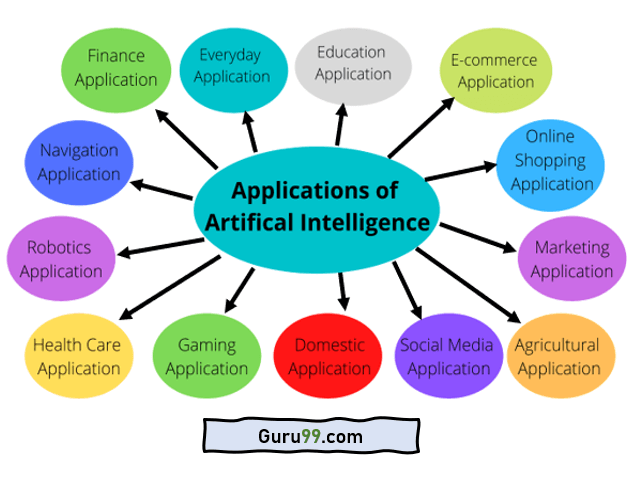
This image is property of www.guru99.com.
Recommendation Systems
Introduction to Recommendation Systems
Recommendation systems are AI-powered algorithms designed to suggest relevant items, products, or content to users based on their preferences, behavior, or similar patterns from other users. These systems are widely used in online platforms and services to personalize user experiences and enhance engagement.
Examples of Recommendation Systems
Recommendation systems can be found in various industries and platforms. E-commerce platforms like Amazon and streaming services like Netflix or Spotify heavily rely on recommendation systems to suggest products or content based on user browsing history, purchase behavior, or previous preferences.
Social media platforms like Facebook or Instagram also utilize recommendation systems to suggest relevant posts, pages, or connections to users based on their interests and interactions. By analyzing user behavior and content preferences, recommendation systems enhance user engagement and improve the overall user experience.
Advantages of Recommendation Systems
Recommendation systems offer several advantages. Firstly, they enhance personalized experiences by providing users with relevant and tailored content or suggestions. By leveraging machine learning algorithms and analyzing user data, recommendation systems can understand individual preferences and make accurate recommendations, leading to increased user satisfaction and engagement.
Another advantage is the ability to improve customer retention and increase sales. By suggesting relevant items or products, recommendation systems can increase cross-selling or upselling opportunities, leading to higher sales and customer loyalty.
Additionally, recommendation systems facilitate the discovery of new and relevant content or products. By exposing users to a wider range of options or personalized recommendations, recommendation systems can help users explore and discover new content, fostering engagement and improving user satisfaction.
Challenges in Recommendation System Development
Developing effective recommendation systems comes with several challenges. One challenge is the cold start problem, where recommendations for new users or items are difficult to generate due to limited data. Since recommendation systems rely on historical user preferences or behavior, new or infrequent users may have insufficient data to generate accurate recommendations.
Another challenge is the issue of over-recommending popular or mainstream items. Recommendation systems tend to prioritize popular or well-known items due to the abundance of data and user interactions. This can lead to a lack of diversity in recommendations and hinder the discovery of niche or less popular items.
Additionally, privacy concerns and data protection are significant challenges in recommendation system development. Recommendation systems require access to user data, including browsing history, purchase behavior, and personal preferences. Ensuring that user data is handled securely and respecting user privacy rights is crucial to maintain trust and transparency.
Robotics
Introduction to Robotics
Robotics is a field that combines AI, engineering, and computer science to design, develop, and program intelligent machines capable of interacting with the physical world. These machines, known as robots, can perform various tasks autonomously or with human assistance and have applications in industries such as manufacturing, healthcare, and exploration.
Examples of Robotics Applications
Robotics has a wide range of applications, making significant contributions in numerous industries. In manufacturing, robots are used for tasks such as assembly, welding, or material handling. These robots can work in hazardous environments, perform repetitive tasks with high precision, and increase production efficiency.
In healthcare, robots are utilized in surgical procedures, rehabilitation, and patient care. Surgical robots assist surgeons in performing precise and minimally invasive procedures, while robotic exoskeletons aid in the rehabilitation and recovery of patients with mobility impairments. Additionally, robots can be used in elder care to provide companionship and support to individuals.
Robots are also utilized in space exploration, where they can replace or assist humans in performing tasks in harsh or dangerous environments. Robotic rovers, such as those used by NASA on Mars missions, enable scientific exploration and data collection in remote locations where human presence is not feasible.
Benefits of Robotics
Robotics offers several benefits across various industries. One advantage is increased productivity and efficiency. Robots can perform tasks faster, with greater precision, and consistency compared to humans. This leads to improved quality control, reduced errors, and increased production rates, ultimately resulting in cost savings and higher output.
Furthermore, robots can perform tasks in hazardous or hazardous environments, minimizing risks to human workers. In industries such as mining, construction, or nuclear power, robots can handle dangerous materials, operate in extreme temperatures, or navigate challenging terrains, ensuring the safety of human workers.
Robots also have the potential to augment human capabilities and improve quality of life. In healthcare, robotic assistive devices can enhance mobility and independence for individuals with disabilities. In manufacturing, robots can alleviate physical strain on workers by handling heavy or repetitive tasks, reducing the risk of injuries and improving overall well-being.
Challenges in Robotics
Despite the benefits, robotics faces several challenges. One challenge is the development of robots capable of fine manipulation and dexterity. Tasks that require delicate handling or complex object manipulation, such as assembling small components, are still challenging for robots. Advances in robotics and the development of more advanced actuators and sensors are necessary to address this limitation.
Another challenge is integrating robots into existing workflows and environments. Industrial robots, for example, often require dedicated spaces or infrastructure, such as safety barriers or fixed workstations. Designing robots that can operate in dynamic or unstructured environments, collaborate with humans, and adapt to changing conditions is an ongoing challenge.
Additionally, ethical considerations arise when deploying robots in roles traditionally performed by humans. Ensuring that robots are programmed to adhere to ethical guidelines, respecting human rights, and maintaining transparency in decision-making processes is crucial in building trust and societal acceptance of robotic technologies.
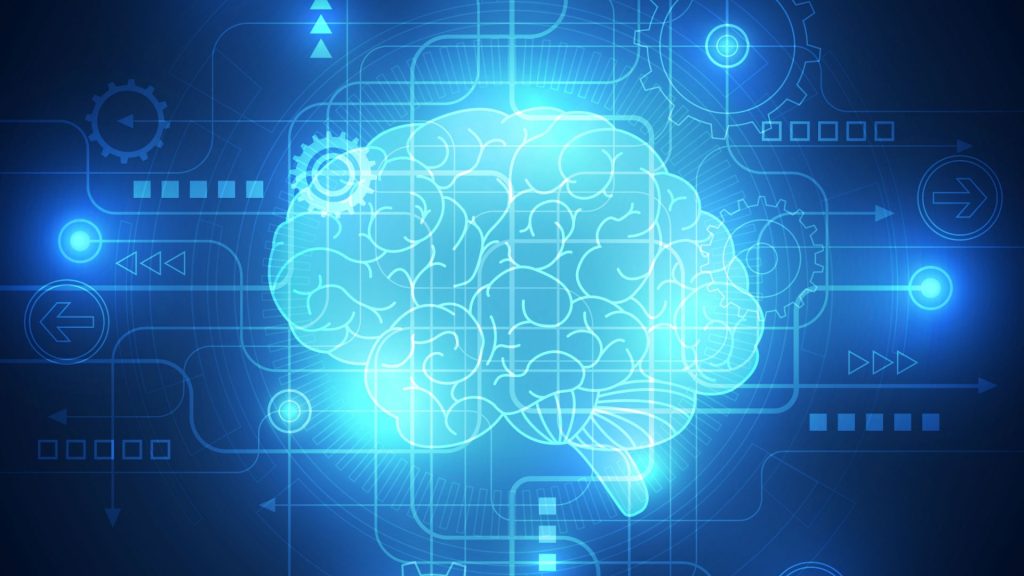
This image is property of www.iqvis.com.
Cybersecurity
Introduction to Cybersecurity
Cybersecurity is the practice of protecting computer systems, networks, and digital data from unauthorized access, use, or damage. With the increasing reliance on digital technologies, the importance of effective cybersecurity measures has become paramount to safeguarding critical information and preventing cyber threats.
Examples of AI in Cybersecurity
Artificial intelligence plays a significant role in cybersecurity, helping to detect and prevent cyber threats in real-time. AI algorithms can analyze large volumes of data, identify patterns, and detect anomalies or potential threats that may otherwise be difficult for human operators to identify.
For example, AI-powered intrusion detection systems can monitor network traffic, detect suspicious activities, and raise alarms or initiate preventive measures. Machine learning algorithms can learn from historical data to recognize patterns of malicious behavior and adapt to new attack techniques, enhancing the effectiveness of cybersecurity defenses.
Advantages of AI in Cybersecurity
AI offers several advantages in the field of cybersecurity. Firstly, AI-powered systems can analyze vast amounts of data much faster and more accurately than humans. This enables the identification and classification of potential threats in real-time, allowing for immediate response and mitigation measures.
Another advantage is the ability to detect previously unknown or zero-day vulnerabilities. Traditional signature-based systems may struggle to detect new and evolving threats, while AI algorithms can adapt and learn from new data, enabling proactive defense and faster response to emerging threats.
Furthermore, AI can help automate labor-intensive cybersecurity tasks and reduce the burden on human operators. By automating tasks such as monitoring, threat analysis, and incident response, AI can free up human experts to focus on more strategic and complex cybersecurity challenges.
Challenges in AI-based Cybersecurity
While AI has immense potential in cybersecurity, it also faces challenges. One challenge is the potential for adversarial attacks on AI systems. Attackers can leverage AI techniques to evade or manipulate AI-based cybersecurity defenses. Ensuring the robustness and resilience of AI systems against adversarial attacks is crucial in maintaining the effectiveness of cybersecurity measures.
Another challenge is the interpretability and explainability of AI models. AI algorithms, such as deep neural networks, can be highly complex and difficult to interpret or understand. In cybersecurity, being able to explain the decisions made by AI systems, especially in critical situations or when failures occur, is crucial for accountability and trust.
Furthermore, the availability and quality of training data can impact the performance of AI-based cybersecurity systems. Access to diverse and representative datasets for training AI models is essential to ensure accurate and unbiased performance. However, acquiring high-quality labeled data can be challenging, especially for emerging and evolving cybersecurity threats.
Healthcare
Introduction to AI in Healthcare
AI has made significant advancements in the healthcare industry, revolutionizing various aspects of patient care, diagnostics, and research. By leveraging machine learning, natural language processing, and computer vision, AI technologies are transforming healthcare delivery and improving patient outcomes.
Examples of AI in Healthcare
AI is being used in a wide range of healthcare applications. One example is medical imaging analysis, where AI algorithms can analyze medical images such as X-rays, MRIs, or CT scans to detect and diagnose diseases or anomalies with high accuracy. This technology enables faster and more reliable diagnosis, improving the efficiency of healthcare professionals.
Another application is patient monitoring and predictive analytics. AI systems can analyze patient data, such as vital signs, medical history, and demographic information, to predict the likelihood of developing certain conditions or complications. This allows for proactive interventions and personalized treatments, leading to better patient outcomes.
AI is also used in drug discovery and development. Machine learning algorithms can analyze large volumes of biomedical data to identify patterns and relationships, aiding in the discovery of new drugs or treatment strategies. This has the potential to accelerate the drug development process and improve the effectiveness of treatments.
Benefits of AI in Healthcare
AI offers several benefits in healthcare. Firstly, it can improve diagnostic accuracy and reduce errors. AI algorithms can analyze vast amounts of patient data, identify subtle patterns or anomalies, and generate accurate and timely diagnoses. This can lead to earlier detection of diseases, more effective treatments, and improved patient outcomes.
Another advantage is the potential for personalized medicine. By analyzing individual patient data, AI algorithms can determine the most effective treatments or interventions based on the patient’s unique characteristics and medical history. This tailored approach to healthcare can lead to better patient outcomes and improved resource allocation.
Furthermore, AI can help alleviate the burden on healthcare professionals. By automating routine tasks, such as data entry or administrative work, AI systems can free up time for healthcare providers to focus on more complex and critical tasks, resulting in increased efficiency and improved patient care.
Ethical and Privacy Concerns in AI-enabled Healthcare
The adoption of AI in healthcare raises ethical and privacy concerns that must be addressed. One concern is the ethical use of patient data. AI systems rely on access to large volumes of patient data to train and improve their performance. Ensuring that patient data is anonymized, protected, and used in compliance with privacy regulations is crucial to maintain patient trust and uphold ethical standards.
Another concern is the potential for biases or discrimination in AI algorithms. If training data is biased or unrepresentative, AI systems may generate recommendations or decisions that perpetuate existing biases or inequalities in healthcare. Ensuring fairness and addressing biases in AI algorithms is essential to provide equitable healthcare services.
Additionally, AI-enabled healthcare must consider the ethical implications of replacing or augmenting human decision-making with machine-driven algorithms. Ensuring transparency, accountability, and the ability to explain the decisions made by AI systems are crucial to maintaining trust and ensuring patient safety.
In conclusion, AI technologies are transforming various industries and revolutionizing the way we live and work. Speech recognition and natural language processing have enabled us to interact with computers and devices through voice commands and improved language understanding. Computer vision has allowed machines to interpret and understand visual information, leading to advancements in fields such as autonomous vehicles and robotics. Machine learning has enhanced the accuracy and efficiency of predictions and decision-making, while virtual assistants have simplified tasks through voice and text-based interactions. AI’s impact can also be seen in recommendation systems, cybersecurity, and healthcare, with benefits ranging from personalized experiences to increased safety and efficiency. However, these advancements also present challenges, such as privacy concerns, biases, and the need for robust regulations. As AI continues to evolve, it is crucial to strike a balance between innovation and addressing these challenges to ensure the responsible and ethical use of AI technologies.
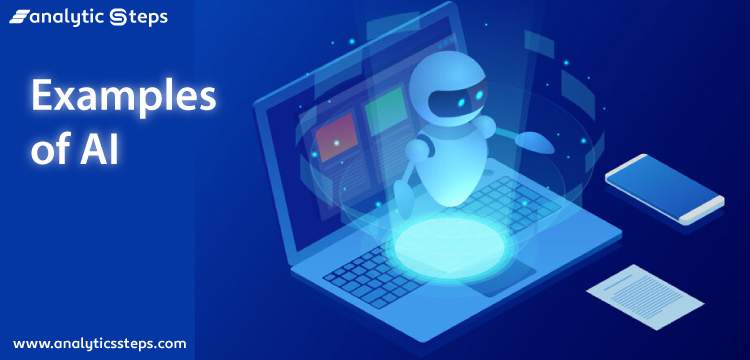
This image is property of www.analyticssteps.com.
